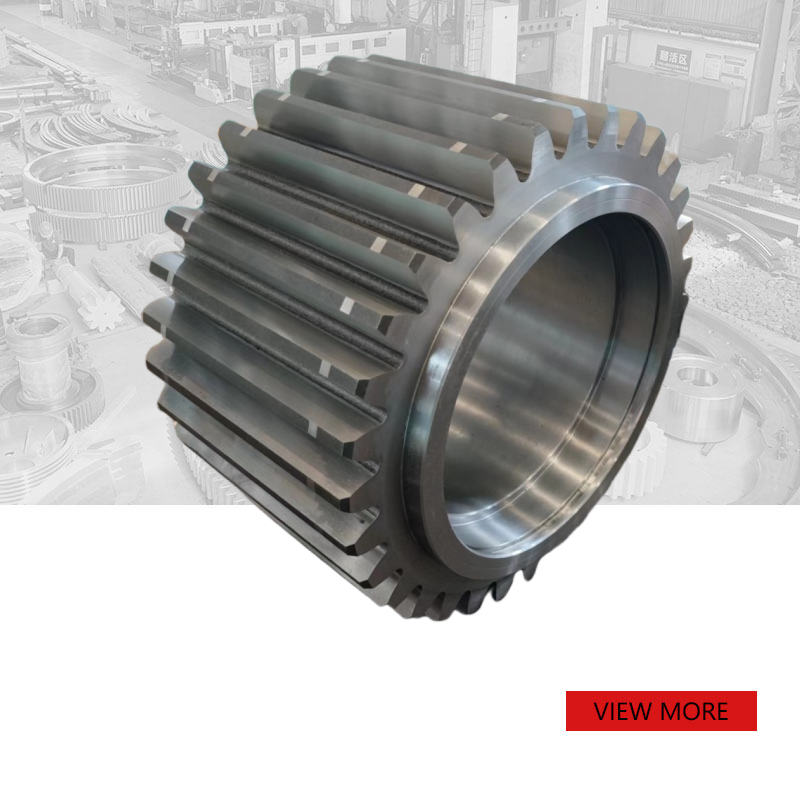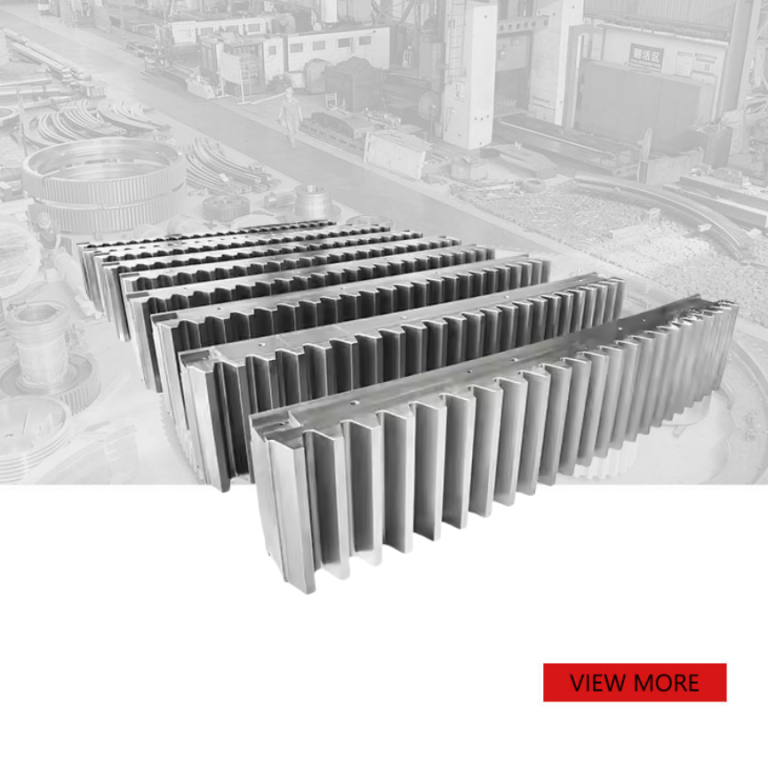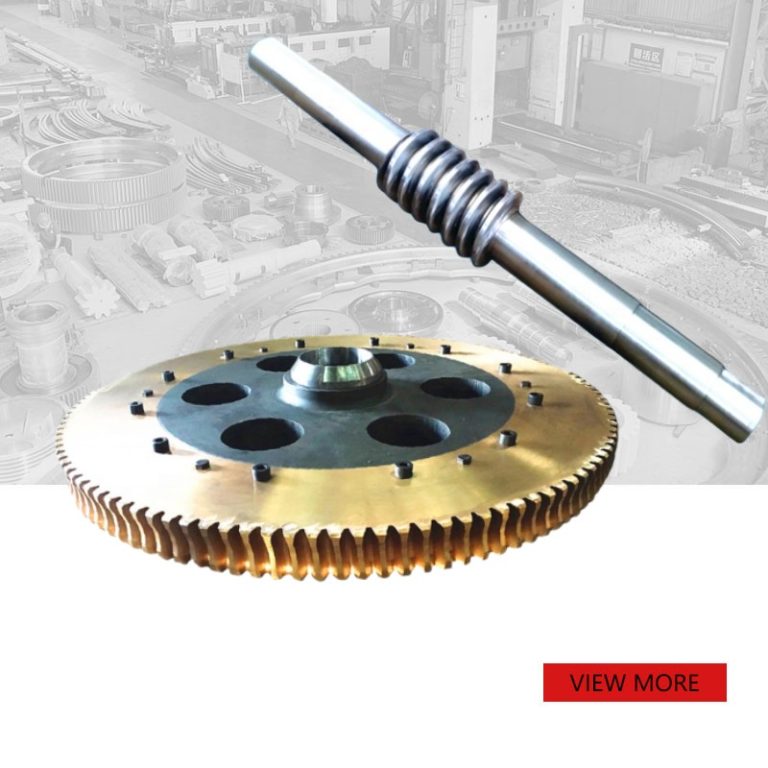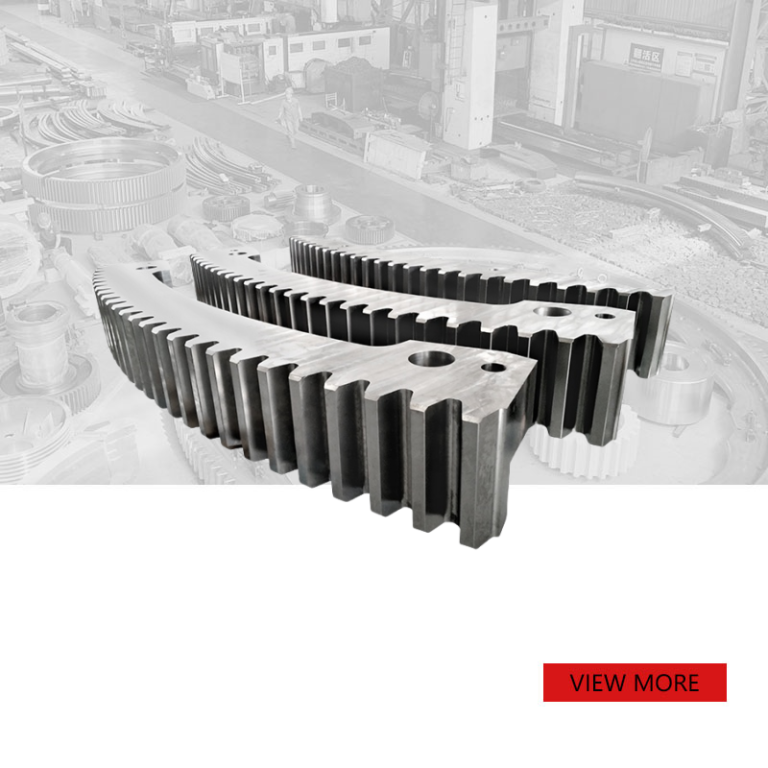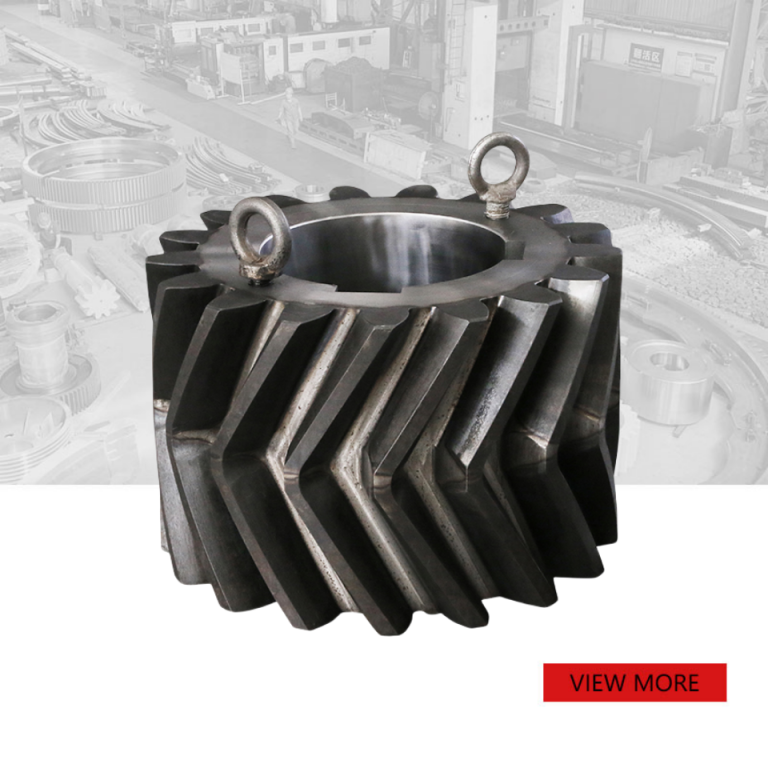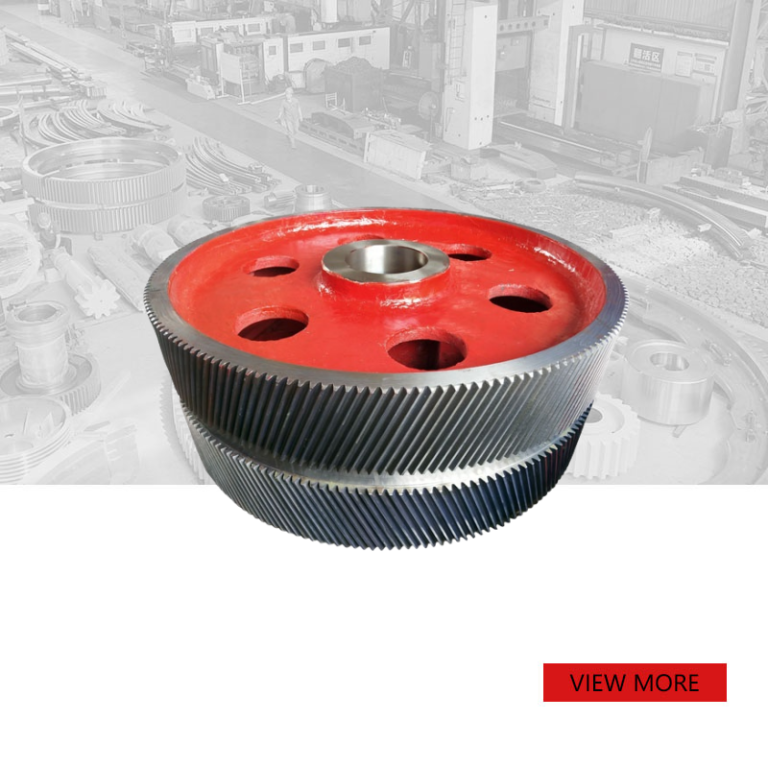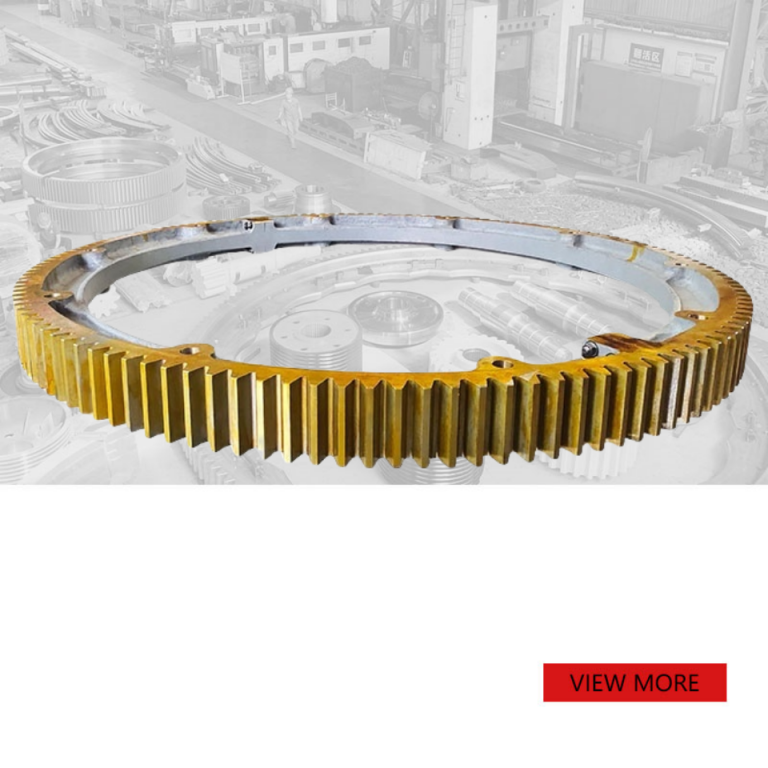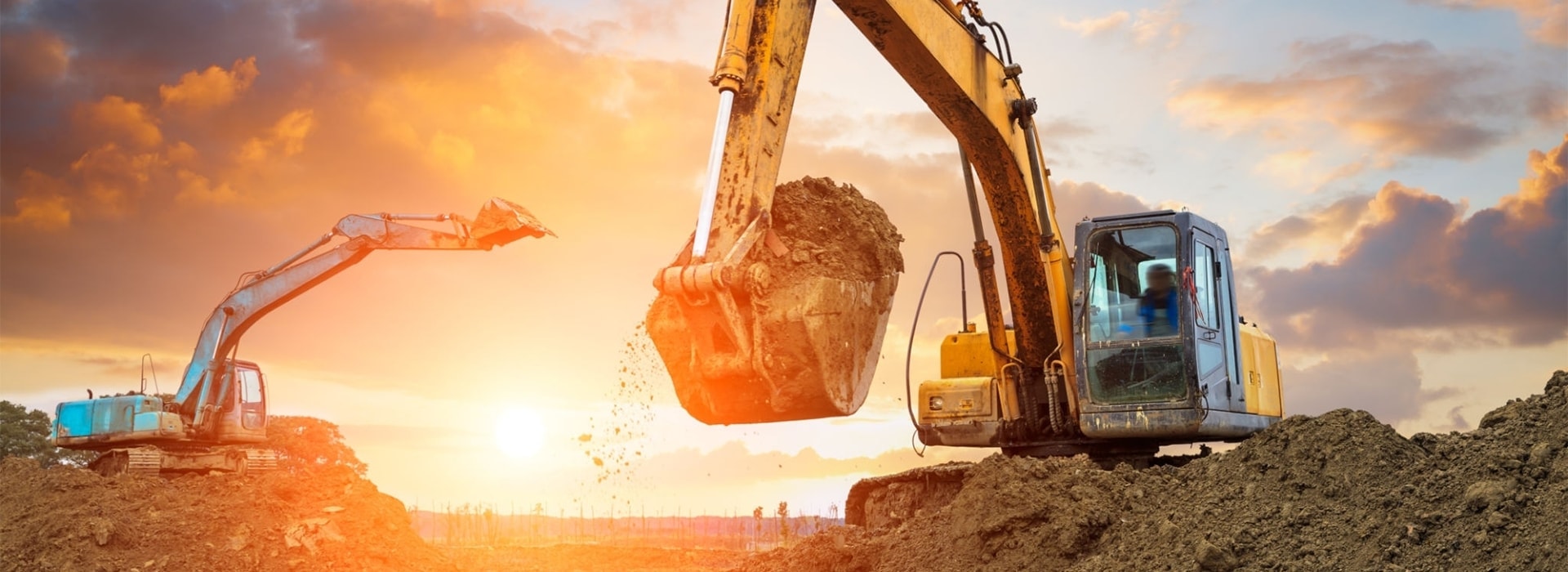
Customized wear-resistant 42CrMo forging spur gear
PRODUCT PARAMETERS
Description
一. Overview
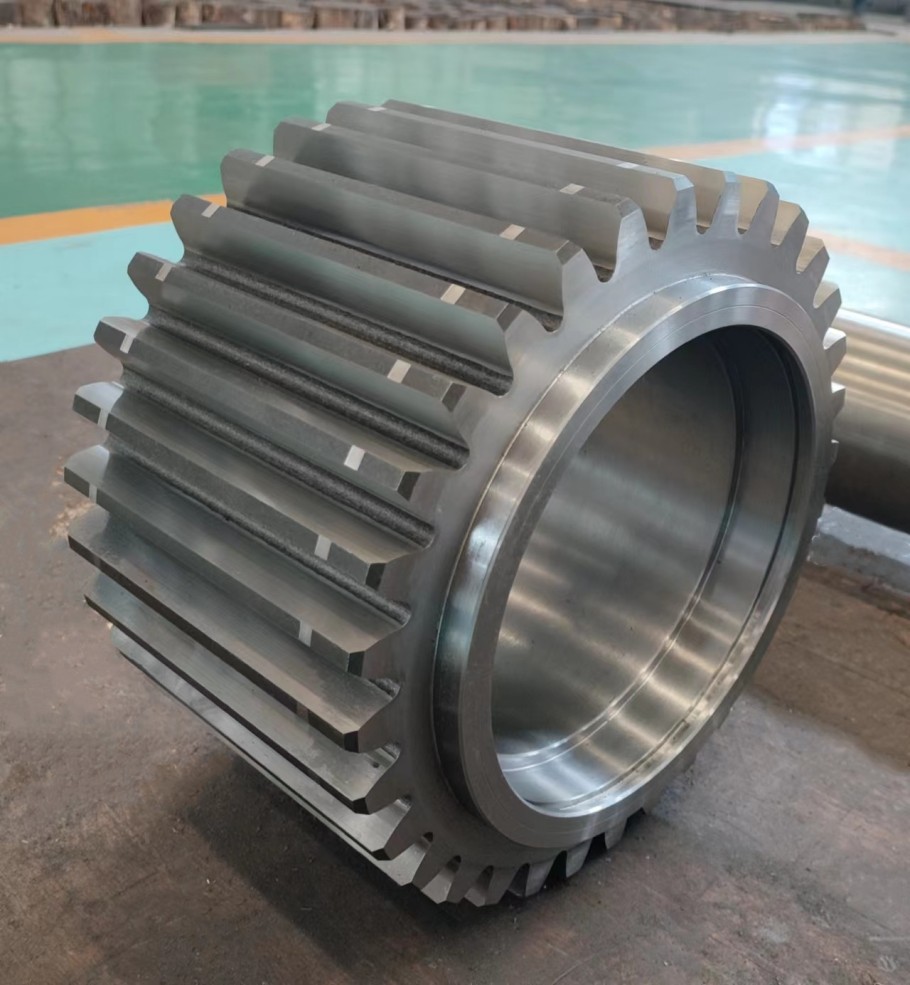
| material | Carbon steel/Alloy steel |
| module | 8-120 |
| Gear profile | Spur/helical |
| Accuracy | 6-8 |
| Heat treatment | QT |
| Surface treatment | Surface hardening/Surface carburizing |
| Coefficient of displacement | According to drawing |
Spur Gear is the most common type of gear, with teeth that are straight and parallel to the axis of the gear. Such gears are usually mounted on parallel shafts and are used to transmit rotational motion and torque.
二. Features
1.Simple structure
2. High transmission efficiency
3. Easy to install
4. Good synchronization performance
三. Usage
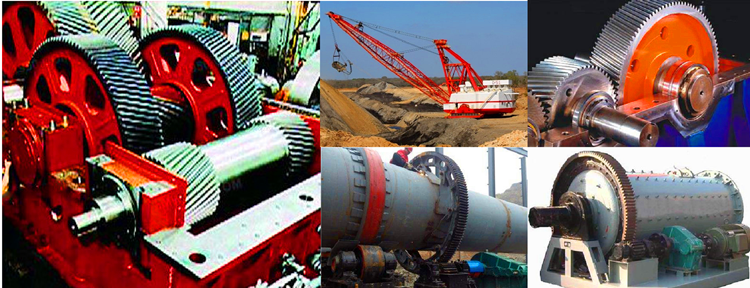
Spur gears are widely used in many large equipment. Here are some common application areas and devices:
1. Industrial reducer
2. Wind turbines
3. Mining equipment
4. Steel plant equipment
5. Cement rotary kiln
四.Production progress
1.Forging
Forged gear blanks have a variety of characteristics and advantages, making them particularly popular in mechanical manufacturing. It has the characteristics of dense internal structure, fine grain, good mechanical properties, high surface quality, good wear resistance and strong dimensional stability
2.Rough machining

The rough machining of the gear blank can remove the excess material, provide a good processing basis for the subsequent processing, improve the heat treatment effect, improve the mechanical properties of the parts and improve the stability after heat treatment. Roughing not only guarantees the quality and performance of the final gear, but also takes into account economic benefits and processing efficiency. Through effective roughing, the technical level and competitiveness of the entire manufacturing process can be significantly improved
3.QT
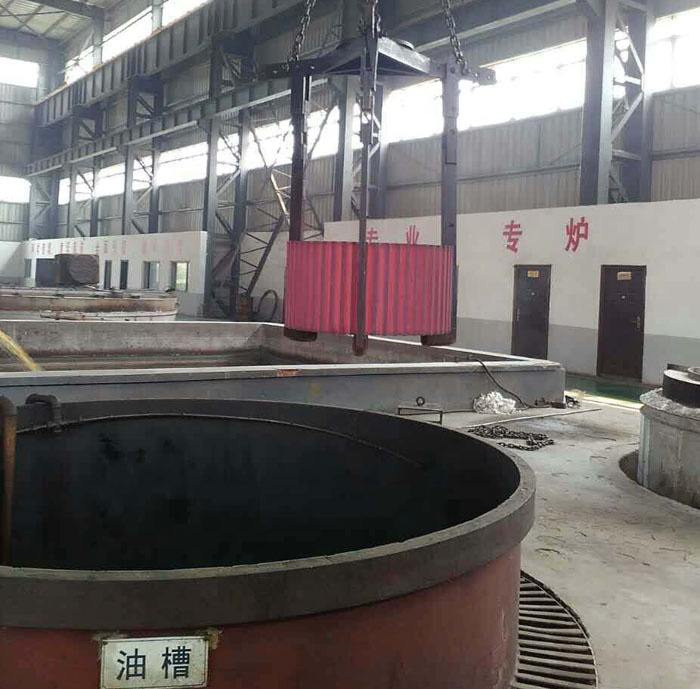
The QT of the gear can improve the hardness and tensile strength of the material, enhance the toughness, enhance the wear resistance, improve the fatigue strength of the product, optimize the deformation problem of the heat treatment, and improve the overall reliability of the product. In short, it not only improves the performance indicators of the gear, but also provides a more reliable guarantee for the gear in practical applications.
4.Finish machining
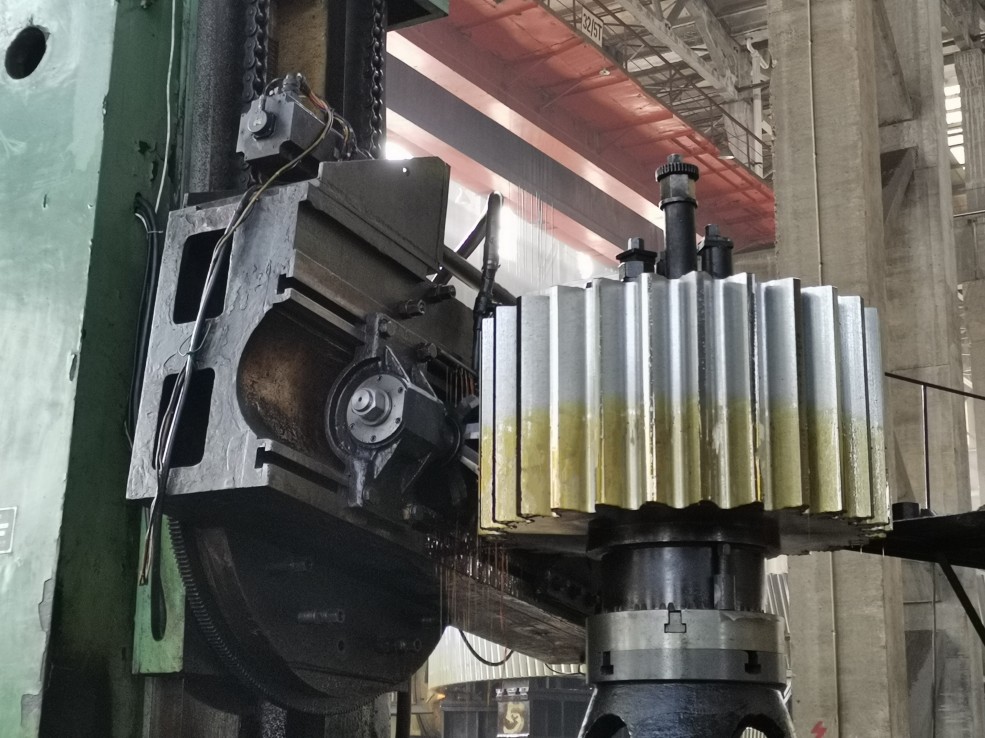
Finish-machining the gear can improve dimensional accuracy, improve surface quality, reduce surface roughness, ensure motion accuracy, reduce vibration and shock, better load distribution, avoid stress concentration, enhance bearing capacity, optimize release conditions, and meet strict tolerances.
5.Inspection & Delivery
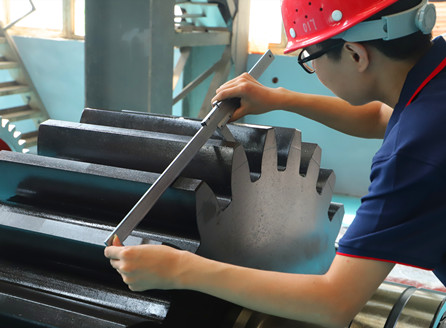
Inspect the gears to ensure they meet design standards, improve reliability and safety, and reduce the risk of failure. Inspection identifies manufacturing defects, ensures dimensional accuracy and surface quality, optimizes assembly performance, extends service life, and meets industry specifications. Through inspection, companies can improve customer satisfaction, reduce maintenance costs, support continuous product improvement, and ensure stable and efficient operation in a variety of applications.

